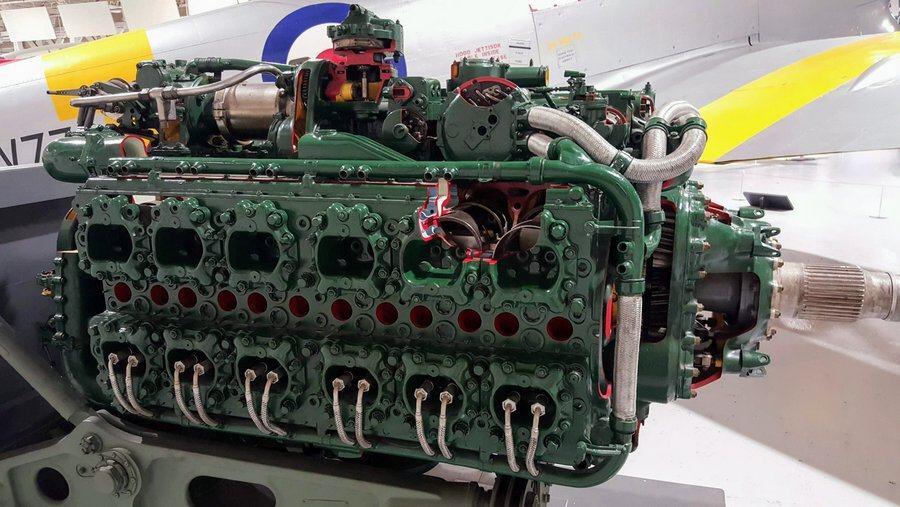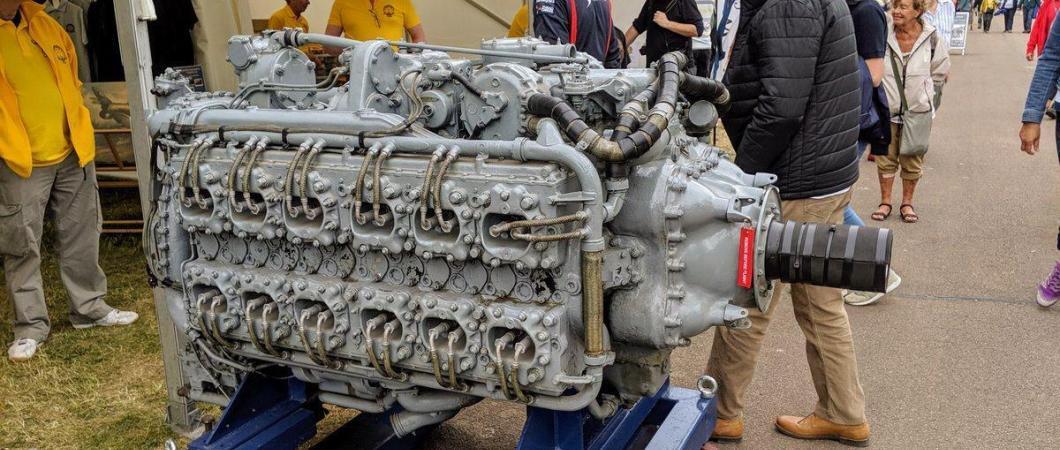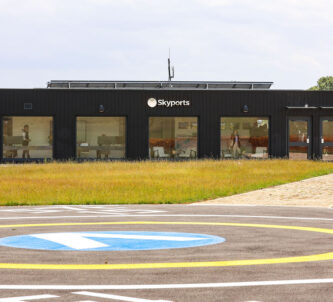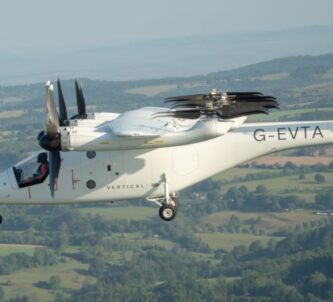You’ve gotta love it! What a spectacular piece of engineering the Napier Sabre is!
At least, what a spectacular engineering concept. Sadly its early iterations at the start of WW2 weren’t always the finest examples of engineering quality control when they went into production. So they weren’t always the most reliable engines, but later versions turned the Hawker Typhoon and the Hawker Tempest into real beasts, especially at low altitudes!
I ran into this particular Sabre engine, a model IIa, earlier this year on the Hawker Typhoon Preservation Group (HTPG) stand at the Duxford Air Festival. It’s not all that unusual to see examples of the Sabre, so I wasn’t particularly surprised to see what I assumed was a static display reproduction.
Not at all! This (above) is engine number 2484, and when fully restored it will power Hawker Typhoon RB396, making her the only airworthy Typhoon in the world.
So what is so cool about the Sabre aero engine?

It is a 24-cylinder piston engine with sleeved valves. Actually it is better described as two 12-cylinder horizontally opposed engines*, fused together in an ‘H’ cross section, as opposed to its famous ‘competitor’ the V-shaped 12-cylinder Rolls Royce Merlin.

Both engines were developed in the early 1930s. The Merlin may have been more reliable but it was nothing like as powerful as the Sabre. The first model of the Merlin produced around 1,000 horsepower. Its final post-war version was rated at 2,000 hp. The Sabre Mk1 produced 2,200 hp from the start, and by its last variant in 1946 that had risen to a colossal 3,500 horsepower!
But it was complicated. Unlike the Merlin and other traditional piston engines it didn’t use mushroom shaped poppet valves to let the fuel into the piston and then let the exhaust out. Instead, it used rolling sleeves between the piston head and cylinder for the inlet/outlet function. This design feature reduced the amount of space needed for 24 cylinders, keeping the engine to a reasonable size & weight.
The Merlin still won over the Sabre at high altitudes, where the Sabre’s poorly developed superchargers failed to deliver the boost needed, but it’s the low altitude performance that turned the Typhoon into a formidable ground attack aircraft, hurtling down on targets at over 500 mph, and as a low level fighter, chasing and easily catching Focke Wulf 190s as they they sped home across the Channel after low-level raids**. It’s also what enabled the Hawker Tempest to gain a reputation for shooting down V1 rockets and the Messerschmitt 262 jet.
* The Napier company obviously had a thing for doubling up engines. In 1949 they produced another complicated design, the Napier Nomad – a “diesel compound” aero engine that combined a diesel engine with a turbine.

** There’s a very good documentary on the Typhoon with lots of pilots talking about their experiences with the aircraft and engine. The Youtube video last 30 mins and is the first half of the whole documentary. You have to pay for Part II.








I hope to see and hear the Sabre fly.
LJK Setright in his book “Power to fly ” says it sounds wonderful.
Thanks
Hi John. I agree! I think it will be fabulous to hear it, and, even better, see it powering a Typhoon in the air again!
In a similar vein, have a listen to the video in this post about BRM’s rebuilt 1.5L supercharged V16 engines in their 1951 F1 cars. Amazing sound!
There was a Sabre tucked away in a corner of the Southampton Aircraft a few years ago, would be interesting to know if it’s still there
Hi Rod, Do you mean Southampton Airport? Or maybe the Southampton Hall of Aviation (now renamed Solent Sky)?
Hi, yes the Napier is on display at the Solent Sky museum in Southampton.